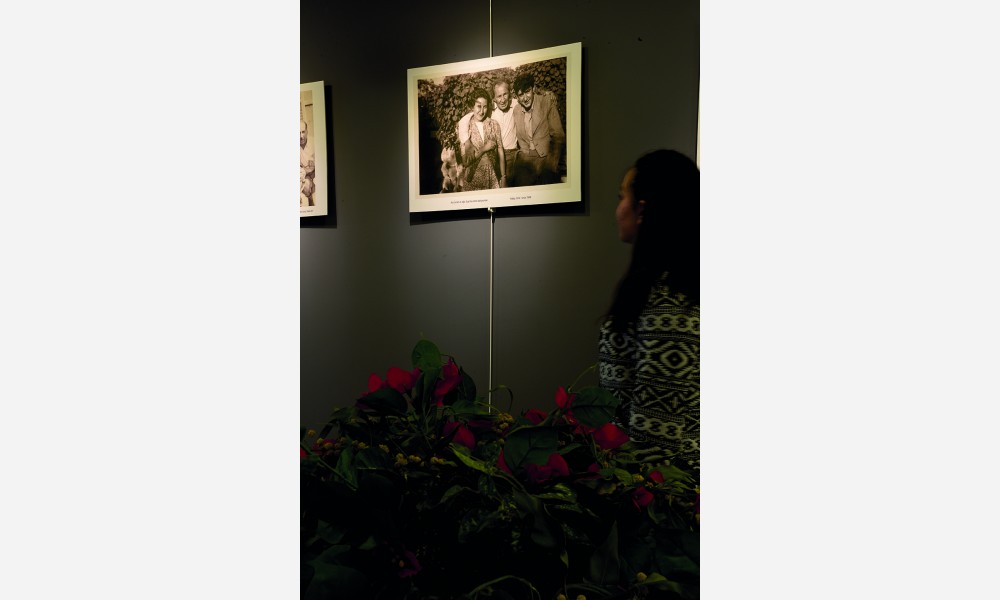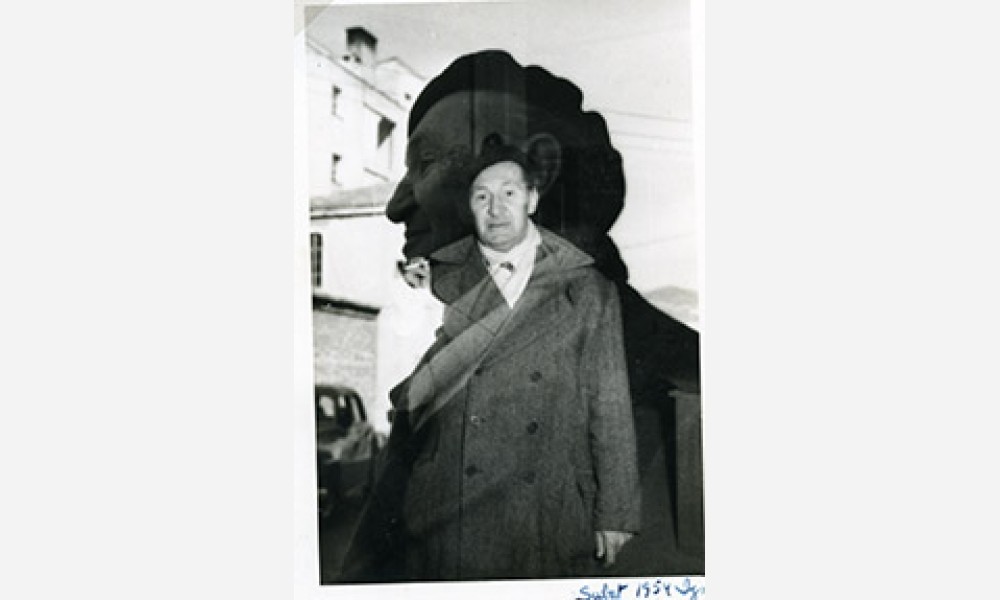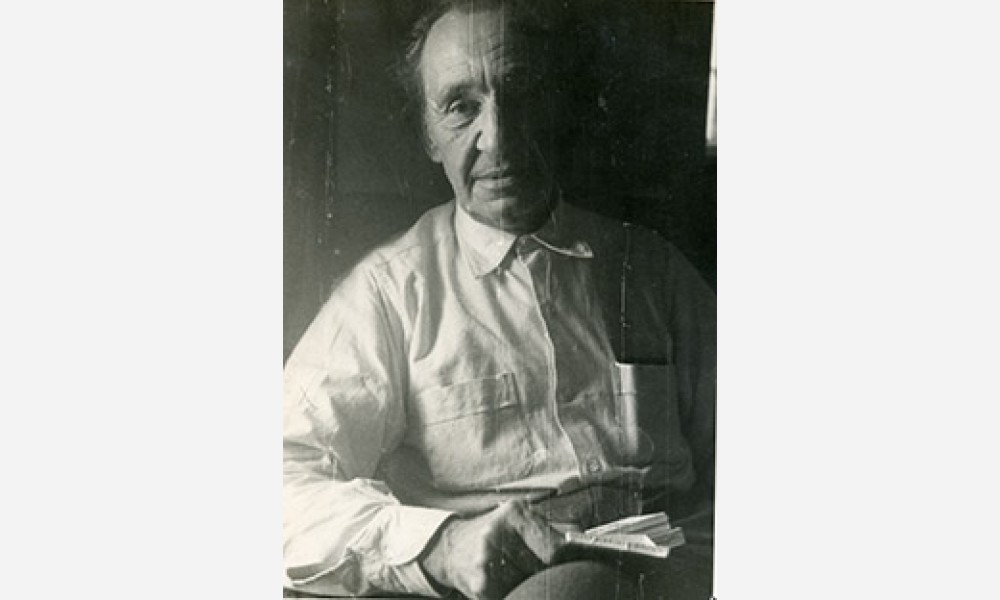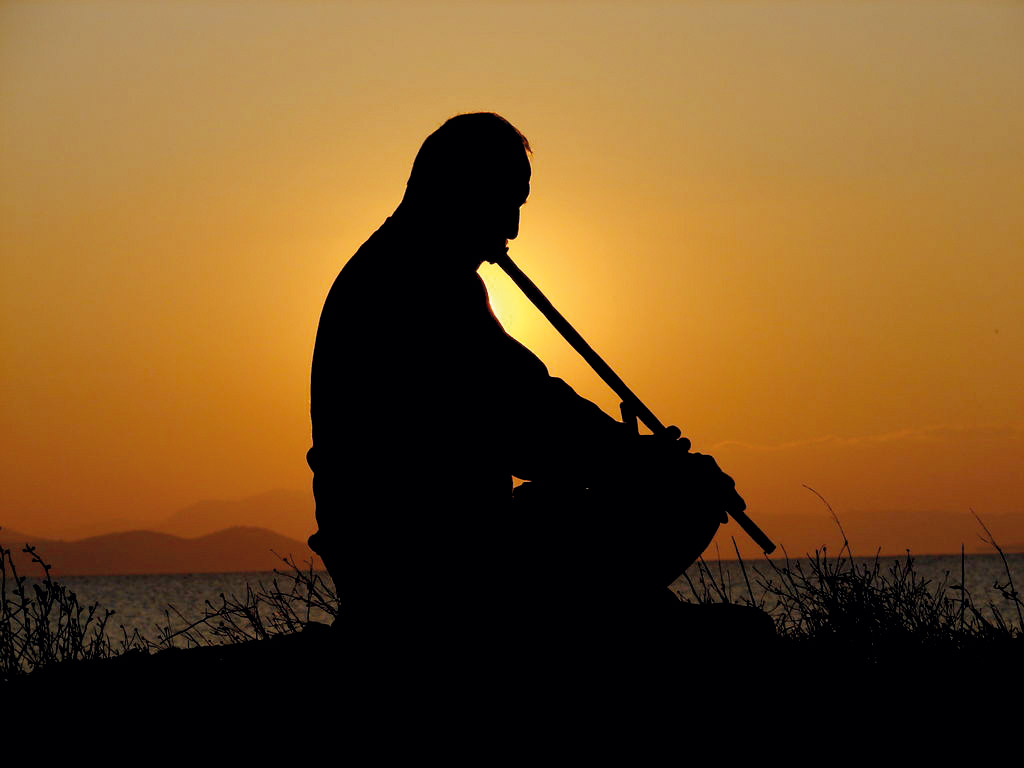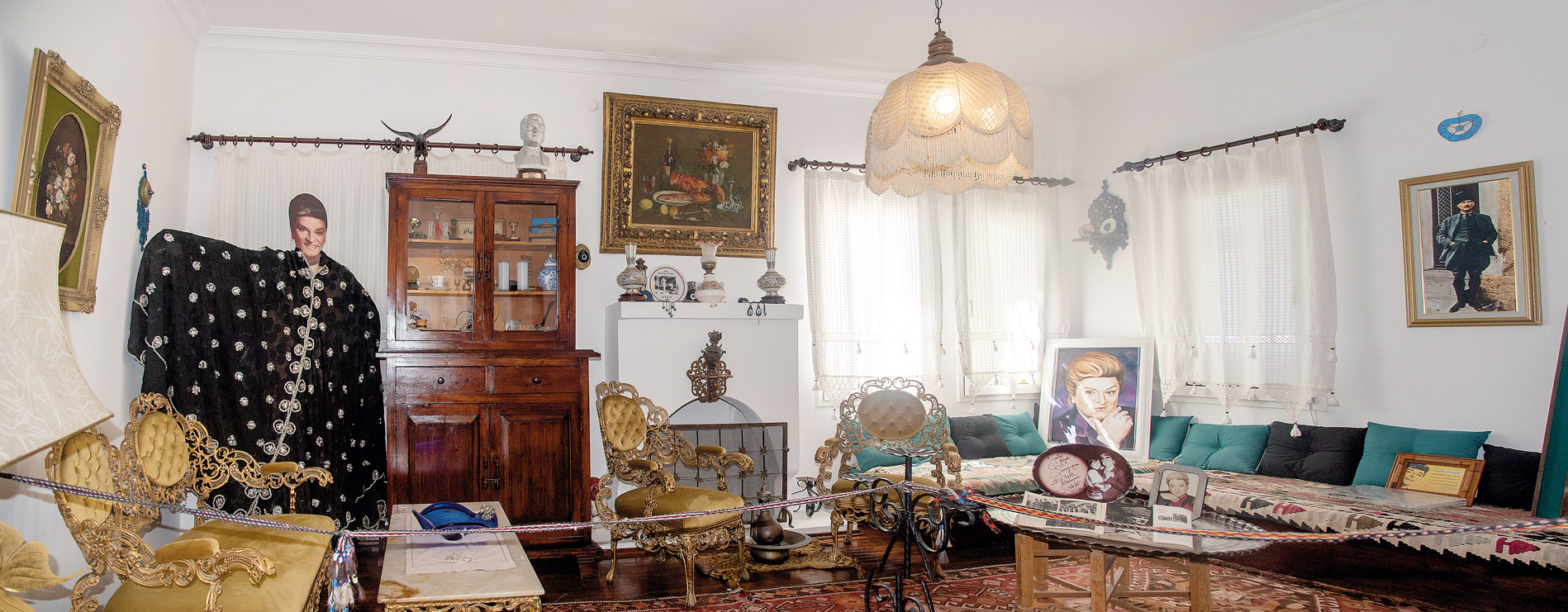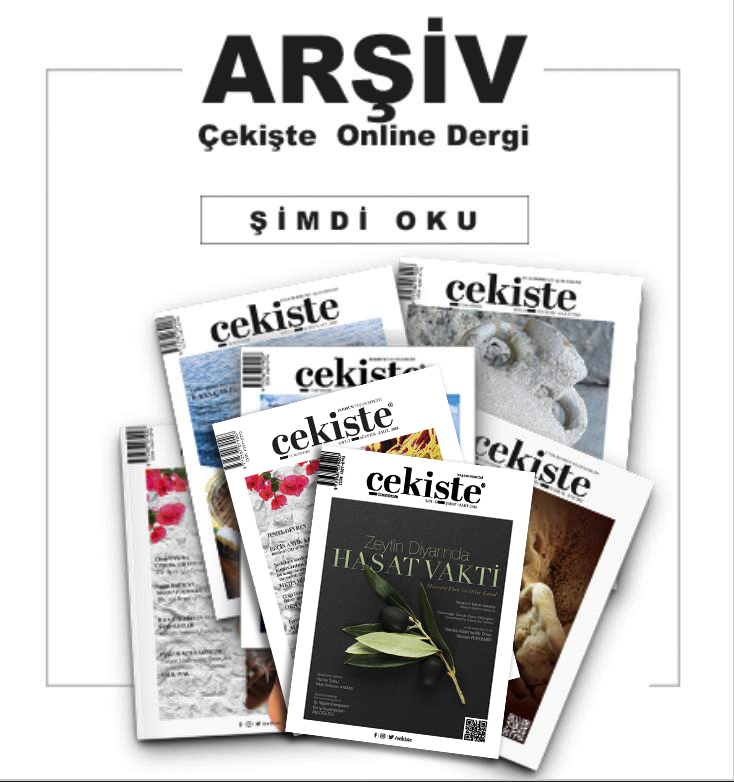PHILOSOPHER OF HALICARNASSUS

Gregor Samsa is the one, who turns into an insect, in Franz Kafka's The Metamorphosis. Cevat Shakir is the one, who turns into the “The Fisherman of Halicarnassus, without pain, anger, fear or pursuit of bad feeling. I have always thought that the similarity of these two opposing and unlike transformations comes from their reality. The beauties of Halicarnassus raise some miracles in a man who is likely to convey those miracles. In the world of balances and contrasts, troubles always turn into beauties; that is how the story of the “Fisherman of Halicarnassus began.
Here are what I will not mention in this article: he knew nine languages as if he was a native speaker and made translations in those languages; he was the first tourist guide of Turkey; he was the inventor of the ”blue voyage” in Bodrum that guided tourism; he was a very talented illustrator; he was the first person to advocate the idea, the foundations of contemporary Western civilization were born in Western Anatolia, with the idea movement called “Blue Anatolianism” and the theories as a result of his Anatolian archaeology and mythology research, he is the one who has best-reflected sea life, seafarers, archaeology and mythology in his books; bringing the grapefruit to Turkey, he made a great contribution to the production of citrus in Bodrum and in the Mediterranean; he transformed Bodrum into a botanical garden thanks to the seeds he brought from Turkey and from different places of the world. Everyone knows these now. Here, I will talk about his thinking practice and what he was like as a philosopher.
Shall we say that it is hard to be a theorist? Or shall we confess that it is difficult for us as we could not enrich our ideas? Are enriching ideas possible with the activity of the mind, perhaps? Is it the process triggered by the dilemma of having to do what people do not want to do in an environment where decision making is a blessing and where people have struggled since they were born? We talked about the enrichment, but we couldn't diversify it and this definition is missing. I will keep adding more details; such as assets and facilities; nature and sea; different languages spoken at home, the basis of linguistic skills; the artists in the family… The first impressions of life, which is the roof for everyone, and the “soul” incident, which is not able to be explained and which makes some innate features find direction in infinite possibilities, can also be included.
Is it philosophy, which is the basis of everything, which makes you a good researcher, historian, psychologist, artist, architect, teacher, archaeologist, dancer, engineer… etc? Is your ability to make sense of patterns that are directly proportional to the practice of thinking makes you a better questioner? When all this comes together with the knowledge about the field you are interested in, will you be an Ataturk, an Albert Einstein, a Jean-Paul Sartre, a Fisherman of Halicarnassus, a Marie Curie or a Bach?
Those who know the Fisherman of Halicarnassus can be divided into four categories; those who read his books, those who know about him, those who both know and read, and those who have no idea. Some may know that once one starts reading his books and gets into his world, after a while, he or she begins to adapt to a different thinking practice. Those who know about him say, “He is our guide” and “He is a good narrator and loving person.” What he conveys both to his readers and to the ones, who know him, is his loving personality. Those who have no idea are perhaps the luckiest ones as in front of them there is a door to open and a sea to put out to.
Here the “transfer”, which is the key, step in. Perhaps, it is the lack of the power of transference that even though people have the “same” features, which we attribute to the Fisherman of Halicarnassus; they do not make them “unique”. As we know that there is a very simple solution, which is “communication”, to everything happens and leads to chaos, resentments and misunderstandings because of miscommunication.
You will notice his sophisticated sense of humour, scroll through his words in his books, where his observation skills and ability to perceive complex patterns in life combined with his knowledge and power of transfer. You might get lost in his world for a while by reading the quote below.
“I have tacked a few times on the small boat. The lateen sail is the easiest sail. On the fifth day after I settled in Bodrum, before going to Karaada, which is three miles from Bodrum, I went on a secret trip to Knidos. The reason why I say “secret” is that all the sailors used to think it was crazy even to go to the tip of the peninsula of Datca. However, it was not crazy. I would go in front of the wind when faced with difficulty and harbour in a bay which was indented just as a lace, of the coast. Just in case, I had my lunchbox with me with enough food for a few days. I tied a big jug of water to the boat so it would not topple down and not get broken. At dawn, I went out of the harbour with the coastal wind. I left Salmacis and Kaplankayasi behind on my right side and the rocks of the castle on my left side. I felt like seeing two Cevats who were fishing with a fishing rod on the rocks and yearningly looking away to Knidos, on both sides. Then, I saw the windmills twirling on my left side as if they were grinding the night.
It was getting dark on the western cape of Karaada in front of me. There would be eighteen miles to Knidos once I got there, however it was eighteen miles of the open sea. While getting closer to Karaada, I heard the partridges of the island and also the whisper of the waves combing the shore. With the help of the tailwind and the buntline, I crossed the cape of the island to the open sea. The coastal wind was relented.
The heads of the waves reacted by the breeze blown the day before on the open sea were slowly descending and ascending like the swells, which make a little sea foam. There was perhaps a quarter mile distance between the heads from one wave to the other. The boat was slowly moving up as soon as meeting the wave and then slowly moving down. I was all alone at the lonely sea. There was no sound but a tweet-like sound caused by the yard rubbing the mast, a plop sound caused by fish flying and the whisper of the sea foam dissolving while the heads of the waves were moving forward. Actually, this whisper makes the loneliness and being all alone. The person, who is alone there, in the middle of the universe, reckons with himself or herself. In cities, on buses and trains, people can hardly face themselves. No matter how distant everything is at the sea, people see themselves from a bird’s-eye view.
A good distance off, the clouds above the mountains of Datca were shining brightly with numbers of lightning. The lightning was just like bridal tinsels zigzagged on veils and the rain was moving the veils. (Tinsels used to be attached on bridal veils.) This was bad, though I had learned that it was called “yayla tepmesi” (impingement of upland) when I first came to Bodrum. Nothing would be left when the sun rose. Suddenly, I heard a rumble sounded like a few bombs exploded in the distance. When I looked that way, I was a few people height foams were raising up the sea. Numbers of dolphins or tuna fish were bouncing. The columns were swaying, reeking like smoke and toppling to the sea. The wind was about to inflate the sail and move the boat and it did, the dark blues shuddering in the sea were appeared. The full breeze was blowing. It was supposed to take me to Knidos; however, it dragged me inside more towards Mersincik. It was late afternoon; there was a mile's distance from Mersincik to Cape Kriyo and then to Knidos.
I was not able to puddle or tack with the kerchief sized lateen sail in so harsh weather. In order to wait for the wind change, I dropped the anchor next to the nook of Mersincik Island. The islet is very sharp and consists of shelves on top of each other all around. Those shelves are alive with the swifts. Their wings are so big that they are not able to walk. The swifts were making the shape of a dome while flying. As a counterbalance to that cloud of wings, the shores of the island are full of colourful fish such as parrotfish, grouper and perdica. Clouds of black-eyed redfish get in and out of the submarine caves just as they are hives of bees. The wind changed in the evening. I lifted the anchor and prepared the sail. Later, I passed by the island I call the "Blue Eyed". There are several big and small hollows on the island. Heavy waves fill them up with water. These tiny lakes shining like mirrors are like the eyes of the island.
I arrived at Knidos at midnight. There was nobody in the huge cape; there was not even a soul around. After spending the next two nights there, I sailed back to Bodrum.”
If this is going to be the resulting paragraph to this article, let me conclude that as follows. Being very successful in the process of creating ideas triggered by his ability to perceive complex patterns in life processed with his observation ability and knowledge is the base of everything and the most important feature of the Fisherman. However, what makes him so “unique” is his ability to transfer. By highlighting that I am proud of conserving the collection of the wise man -I have admired since I was a child- in the Maritime Museum of Bodrum with my team, I invite the ones who do not know the Fisherman of Halicarnassus.
Who is the Fisherman of Halicarnassus?
As a member of the exceptional “Shakir Pasha Family”, he was the first one of the worldwide known artists. Some of her siblings and relatives are Princess Fahrelnissa Zeid, who is one of the pioneers of modern art and the first representatives of abstract art in Turkey; Master Painter Aliye Berger, who is the first engraver and engineer of sgraffito and carving in Turkey; Fureya Koral, who is the pioneering ceramics artists in Turkey; Master Painter Nejad Melih Devrim; Stage Actress Shirin Devrim; Instructor and Painter Cem Kabaagac. The Fisherman born in Crete studied in the Local Primary School on Buyukada (The largest of the nine so-called Princes' Islands in the Sea of Marmara, near Istanbul) and secondary and high school in Robert College and then studied modern history at Oxford University. He studied at the Academy of Fine Arts in Rome.
His love of literature and painting introduced him to journalism; he drew comics, cartoons and covers and wrote stories in newspapers and magazines using several nicknames. He had a good knowledge of Arabic, Persian, English, French, Italian, German, Spanish, the Ancient Greek and Modern Greek that he made translations.
His autobiography The Blue Exile (1971); Aganta Burina Burinata (1946), The Child of the Other Side (1956); A Flower Left to the Aegean Sea (1972), At the Seas of Youth (1973); Anatolian Legends (1954), Anatolian Deities (1955), the Voice of Anatolia, (1971), Asia Minor (1971), Hey Great Country (1972), his ideography writings and essays; Coolness of the Aegean Breeze (2002), edited by Shadan Gokovali, who was like a son to him; his radio chats; The Call of the Sea (1998), children’s story The Smiling Island (1998).



